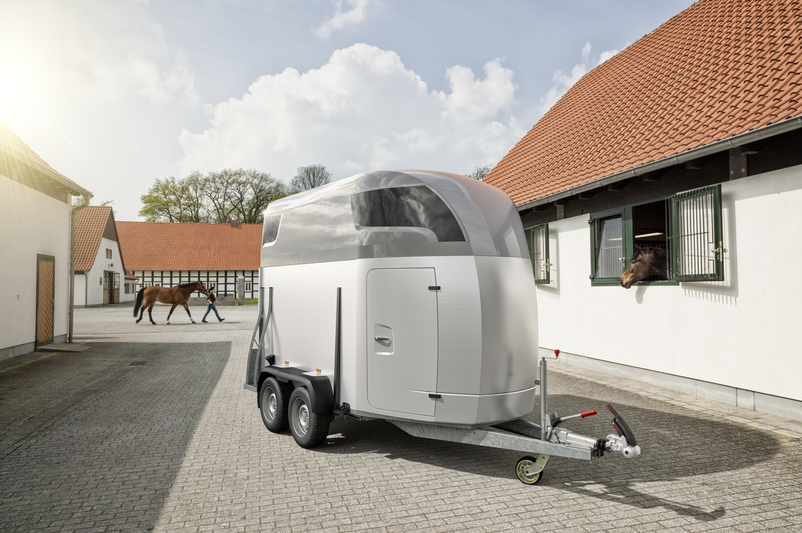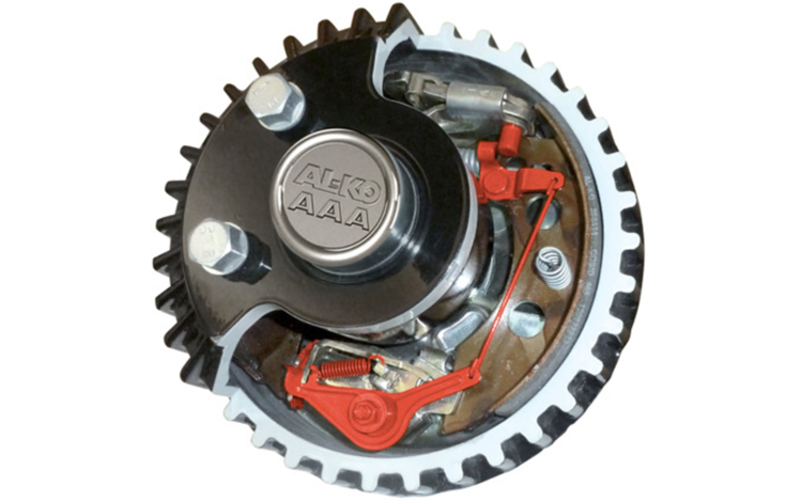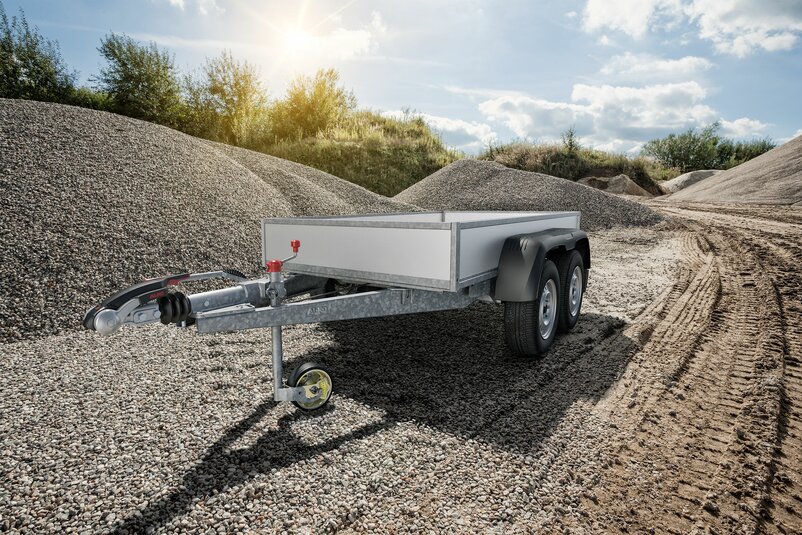Keep your eyes peeled when buying a trailer - what to look out for
Practical and simple - having a trailer that can play its part in tricky situations, even if they only happen every now and then, can take away the worry of having any difficulties on the road. You may be thinking that all you have to do is load up your goods, hop into your high-performance vehicle and take your goods to their destination.
But be careful, it's not quite that easy. The safety of everyone has to take top priority when using public roads. Therefore, you shouldn’t cut corners when buying a trailer.
Read on to find out the difference between unbraked and braked trailers and what speaks in favour of the braked model.

What exactly are braked trailers?
An unbraked trailer has no brakes of its own. This means that the towing vehicle must do all the braking itself. With a braked trailer, on the other hand, some of the pressure is taken off the towing vehicle during the braking process, because the trailer brakes itself. How does it work? The trailer runs onto the towing vehicle when braking, the pull bar on the overrun device gets pushed in and the travel and force generated in the process is transmitted to the wheel brakes via the transmission device and then trailer brakes. The higher the load and the more the speed, the more braking takes place. Here we can speak of a load- and speed-dependent braking system.
Point 1 in favour: a shorter braking distance, increased safety
Since the wheel brakes on the trailer take part of the braking load off the towing vehicle, the braking distance when driving a vehicle combination including a braked trailer gets reduced by about 17% and the time to a standstill by about 25%. This can save lives.
Point 2 in favour: you can make use of your vehicle’s maximum trailer load
750kg is the maximum towable load for unbraked trailers on passenger cars.
If you decide to use a braked trailer, the registered towable load for your vehicle can be utilised to its full extent. Depending on the towing vehicle, the max. limit for braked trailers is 3,500 kg.
Only a braked trailer can reduce the stress and strain put on your car's braking system.
Point 3 in favour: the brakes on the towing vehicle will last longer
If your trailer is also involved in the braking process, then this helps take care of the brakes on the towing vehicle.
A top tip for even higher levels of safety
Thanks to the AAA - AL-KO Automatic Adjustment for 2051 and 2361 wheel brakes, your brakes always have the optimal settings and braking distance is up to 5 metres shorter. What’s more, you can enjoy even more driving comfort, as the overrun shock is always optimal, and thus hardly noticeable. You can choose to have the AAA retrofitted for any axle with a bolted brake back plate.
The formula sounds convincing: increased safety + higher comfort = safe driving and a relaxed arrival at your destination .

